The village of Hundleton lies south of the county town of Pembroke. The red granite War Memorial which commemorates the men of the area who died in both World Wars has ten men named on it who died in the Great War, plus another three who died during World War Two. Many thanks to Les Nixon for the photographs of the War Memorial.
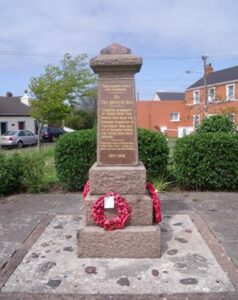
The Great War, 1914-1918
Albert Clifford, Private, 6546, King’s Shropshire Light Infantry. Albert was born at Westbury, Bristol on 30 June 1894, the son of John Henry and Ellen Clifford. Albert was educated at Westbury Boys School, and became a milkman after leaving there. Albert had enlisted at Hereford into the 7th Battalion, King’s Shropshire Light Infantry. He was stationed in Pembrokeshire with the battalion early in the war, and married Lily Reynolds, of Gilderoy, Hundleton on 4 March 1916. The battalion was posted to France in October 1915, joining 76 Brigade, 3rd Division. In 1916 the Division fought at the Actions of the Bluff, and at the St Eloi Craters, south of Ypres. It was then moved south to the Somme, where they it took part in the great Battle of the Somme, and fought there at the Battle of Albert. Albert was killed on the Somme on 14 July 1916. He was 22 years old, and is commemorated on the Thiepval Memorial, France. Albert is not commemorated on the Hundleton War Memorial. His brother-in-law, John Reynolds, also fell.
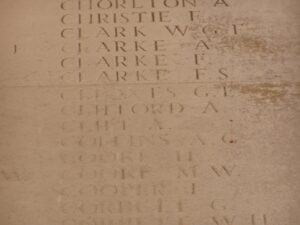
Benjamin Davies, Private, 235731, Royal Welsh Fusiliers. Benjamin was the son of William and Esther Davies, of Hundleton. He enlisted at Pembroke, into the 24th (Denbighshire Yeomanry) Battalion, Royal Welsh Fusiliers, part of 231 Brigade, 74th Division, and had fought with the Division at the Battles of Gaza, and during the capture of Jerusalem. In June 1918, the 24th RWF were further transferred into 94 Brigade, 31st Division. Upon transfer to the 31st Division, the 24th RWF were sent to Flanders, and on 28 June 1918 were taking part in the Battle of the Lys, notably the actions of La Becque. They held the Germans south of the Ypres Salient, but lost heavy casualties in doing so. Benjamin was to Die of Wounds suffered that same day 28 June 1918, aged 28, and is buried in Cinq Rues British Cemetery, Hazebrouck.
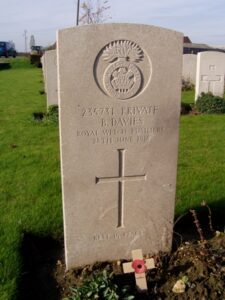
George Davies, Petty Officer Stoker, 291706, Royal Navy. George was born in Stackpole on 16 May 1871, the son of James and Ann Davies. The family later moved to of Mount Pleasant, Maiden Wells, Pembroke. He served in the Royal Navy at the outbreak of the Great War, in HMS Ardent. The Ardent was an Acasta Class Destroyer, and formed part of the 4th Destroyer Flotilla of the Grand Fleet, led by Admiral Sir John Jellicoe. The Grand Fleet played a central role in the Great Battle of Jutland, which began on 31 May 1916, and it was on the second day of the Battle, 1 June 1916, that the Ardent was sunk. An extract from the Official History stated- ‘This destroyer now found herself alone, and having escaped with little injury, made away southwards in the hope of finding the rest of her division, which in fact had ceased to exist. What she fell in with was something quite different…. Lieutenant-Commander A. Marsden in the Ardent saw smoke ahead of him, and thinking it came from his consorts, he made towards it. Then the form of a large German ship loomed up, and without hesitation he attacked. Another torpedo was fired at very close range, but before he could see the result he was blinded by the searchlights of four battleships in line ahead. Out of the glare came the inevitable hurricane of shell. In a minute or so the Ardent was a mere mass of scrap-iron, and switching off their lights, the enemy disappeared and left her to sink helpless and in total darkness. She was lost with all hands (12.19) except Lieutenant-Commander Marsden and one man.’ George Davies was lost in the sinking, and is remembered on the Plymouth Naval Memorial in Devon, on Panel 16. He was 37 years old.
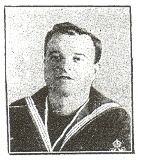
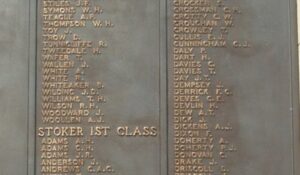
Thomas Eynon, Private, 19992, Welsh Regiment. Thomas was the son of Thomas and Mary Eynon, of Castlemartin. He lived with his Aunt, Mrs Hannah Beddoe, at India Row, Monkton prior to the war. Thomas enlisted at Pembroke into the 15th (Carmarthenshire) Battalion, the Welsh Regiment, which was known as the Carmarthen pals. The Battalion formed part of 114 Brigade, 38th (Welsh) Division, and landed in France during December, 1915. They were initiated into trench warfare in Flanders, around Fleurbaix, before moving South prior to the July 1916 Somme Offensive. It was in the period leading up to the Somme Battles that Thomas was to die. He was killed in Action on 13 March 1916 while the Battalion was holding the line near the La Bassée Canal. He was 33 years old, and is buried in Guards Cemetery, Windy Corner, Cuinchy, in Grave III. M. 6.
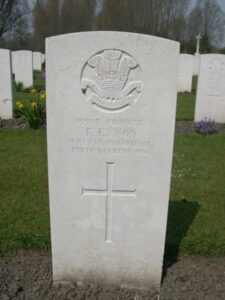
William George Greenslade, Gunner, 131053, Royal Garrison Artillery. William was born at Hundleton, the son of Frank and Elizabeth Greenslade, of Whitegate. He enlisted at Pembroke into the 144th Siege Battery, Royal Garrison Artillery. The Battery moved to France in August 1916, and probably moved to Ypres. Little is known of William’s service, but he was only 19 years old when he died of Wounds, on 21 October 1917. He is buried in Wimereux Communal Cemetery, in Grave VI. E. 14.
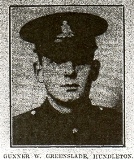
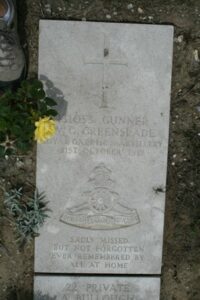
William Harries, Stoker 1st Class, K/35797, Royal Navy. William was already in the Royal Navy at the outbreak of War. Whilst on leave in 1917, he married Margaret Ann Roblin, of Maiden Wells, Pembroke. William served aboard HMS Devonshire, a Cruiser which had been built at Chatham in 1904. Before transferring to the Atlantic Fleet in March 1907 HMS Devonshire served with the Channel Fleet in the 1st Cruiser Squadron. She then moved to the 3rd Division of the Home Fleet stationed at Devonport in August 1909 and continued there until 1912 when she moved to the 5th Cruiser Squadron. From 1913 until 1916 she served with the 3rd Cruiser Squadron. HMS Devonshire was then sent to Scapa Flow. She was given a refit at Cromarty in September 1914 and then served in Norwegian waters until April 1916. The Devonshire was then stationed at the Nore in 1916 later joining the 7th Cruiser Squadron, before serving in the North America and West Indies Station. It was at the West Indies that William was taken ill, and he died on 22 April 1919, aged 28. He is buried in Kingston (Up Park Camp) Military Cemetery, Jamaica.
Owen Kennea, Sapper, 51656, Royal Engineers. Owen was the son of George and Margaret Kennea, of 5, Thomas Street, Pembroke. He enlisted on 5 September 1914 at Newport, Monmouth into the Royal Engineers. On 22 October 1914 Owen was posted to the 90th Field Company, Royal Engineers, which from January 1915 onwards was attached to the 9th (Scottish) Division, which was to become widely regarded as one of the best in the British Army. Owen landed in France on 13 May 1915, and moved with the company to Steenwerck. Owen looks to have been attached to the staff of a bomb (or hand grenade) making factory in Steenwerck. At around 5.50 p.m. on 27 May 1915, an explosion occurred in the factory, killing or badly wounding a large number of officers and men who were stationed in the immediate locality. Owen was 44 years old when he was killed that day, and is buried in Steenwerck Communal Cemetery, France.
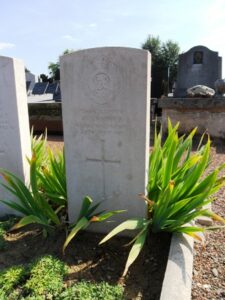
John Mason, Stoker 1st Class, 229299, Royal Navy. John was born on 6 April 1887, the son of Mr and Mrs J. Mason, of West Orielton. John was a married man, with two children, who resided with his wife Beatrice Mason (nee Johns) at Waterloo, Pembroke Dock. He had enlisted into the Royal Navy on 6 April 1905, and from 7 September 1915 had served aboard HMS Marmion, a Moon Class Destroyer, which was launched on 28 May 1915. Whilst on patrol off the Shetlands on 21 October 1917, Marmion was involved in a collision with HMS Tirade, another Royal Naval destroyer, and sank. John was one of several seamen to lose his life in the sinking. His body must have washed ashore at Norway, and John is one of several sailors from Marmion to be buried in Fredrikstad Military Cemetery, Norway.
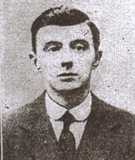
David Reynolds, Corporal, 118, Welsh Regiment. David was born in 1889, the son of John Reynolds and Sarah Reynolds, of Guilderoy, Hundleton. He worked as a stone mason and was an original member of the 1/4th Battalion, Welsh Regiment, the local Territorial infantry unit, for several years prior to the war. David married Sarah Walters, of Monkton, in 1913, and the couple had two sons born there over the coming years. Following the outbreak of war, the 4th Welsh mobilised at Carmarthen, as part of South Wales Brigade, Welsh Division and moved to Tunbridge Wells until the end of the month, before moving to Scotland to man the Forth and Tay Defences. On 17 April 1915 the battalion moved to Bedford, joining 158 Brigade, 53rd (Welsh) Division. On 19 July 1915 the entire Division sailed from Devonport for Imbros and on 9 August 1915 landed at Suvla Bay. The infantry moved off the beaches across the Salt Lake, under shellfire, into the scrub covered Chocolate Hill, but due to a lack of maps and no knowledge of the terrain, many of the units became disorientated, and the situation became chaotic. David, serving as a machine-gunner, was killed in action here on 13 August 1915. The 25-year-old has no known grave and is commemorated on the Helles Memorial, on Panel 140. His brother-in-law, Albert Clifford, also fell.
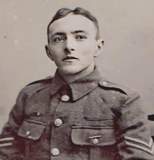
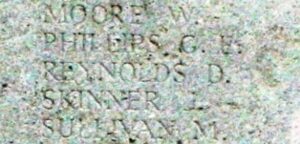
John Roberts, Private, 54526, Welsh Regiment. John was born at Monkton, the son of William and Eleanor Roberts, later of Taylor’s Lake. He enlisted at Carmarthen into the 4th Battalion, Welsh Regiment. At some time after the Somme offensive, John was posted to France, joining the 19th Battalion, Welsh Regiment, which was the Pioneer Battalion to the 38th (Welsh) Division. John would have joined the battalion after it had moved to Ypres in 1916. On 31 July 1917 the Division made its famous assault on the Pilckem Ridge, during the Passchendaele Offensive, before being posted to the Armentieres sector to rest. In April 1918 the Division was posted to positions on the Somme, north of Albert. From 21 August 1918 the Division took part in the great advance across the old Somme battlefields, towards the Canal du Nord and the Hindenburg Line. It was taking part in heavy fighting during the Battle of the Sambre, when John Died on 10 November 1918, aged 21. He is buried in Awoingt British Cemetery, in Grave III. D. 18.
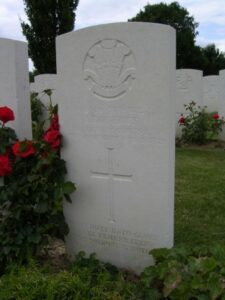
James Steele, Private, 51883, South Wales Borderers. James was born at Lambeth in 1891, but resided in Hundleton prior to the war, where he worked as a ploughman. He enlisted at Pembroke, initially into the Welsh Regiment, but was transferred into the 10th Battalion, South Wales Borderers. The battalion formed part of 115 Brigade, 38th (Welsh) Division. After surviving the Somme and Passchendaele, James was killed in Action on 2 September, 1918. The Battalion were pushing toward the Hindenburg Line around the Epehy area. James is remembered on the Vis-en-Artois Memorial, Panel 6. James is not commemorated on the Hundleton War Memorial.
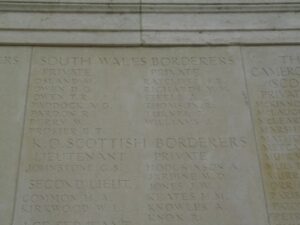
Francis George Wynne, DSO, Major, Loyal North Lancashire Regiment. Francis was the son of Major Mark Saurin Wynne (of the 81st Regiment) and Susanna Frances Wynne, of Mellaston, Pembroke. He served with the 2nd Battalion, Loyal North Lancashire Regiment, which was part of 94 Brigade, 31st Division. The Division didn’t get to France until 27 May 1918, but Francis had been in France since 26 September 1915, where he was awarded his Distinguished Service Order for Conspicuous Gallantry. The Citation in the 26 September 1916 edition of the London Gazette reads- ‘For conspicuous gallantry and devotion to duty in action. When the enemy, in overwhelming numbers, attacked our trenches, he remained at his post, though wounded and unable to stand, until the enemy were beaten off. He not only commanded his own company, but took charge of another, the officers of which had become casualties.’ Francis was killed in Action on 10 April 1918, aged 32. He is remembered on Panel 7 of the Ploegsteert Memorial.
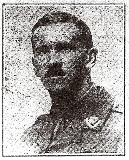
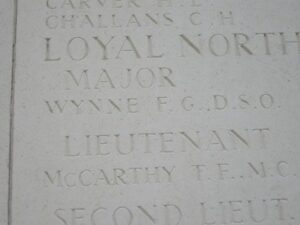
World War Two, 1939-1945
Gilbert George Charles Brickle, Leading Stoker, D/KX 80411, Royal Navy. Gilbert was the son of John and Jane Brickle. He was the Husband of Iris Brickle of Stoke, Devonport. Gilbert served in the Royal Navy, as a Leading Stoker aboard HMS Hunter. HMS Hunter (H35) was one of nine H-class destroyers of the Royal Navy, and was laid down by Swan Hunter on 26 March 1935. She took part in the Norway campaign in 1940. During the First Battle of Narvik on 10 April 1940, Hunter and five other H-class boats of the 2nd Destroyer Flotilla attacked the German destroyers that had transported German land forces to occupy Narvik in northern Norway the previous day. The flotilla was engaged by German destroyers in the Ofotfjord at the entrance to the harbour and sank the destroyers Wilhelm Heidkamp and Anton Schmidt, heavily damaged Diether von Roeder and inflicted damage on two others. Seven German transport ships were also sunk. As the British flotilla turned to leave, it was engaged by three German destroyers emerging from the Herjangsfjord and then by two more coming from Ballangen Bay. In the ensuing battle, the British flotilla leader HMS Hardy was badly mauled and had to be beached in flames, while Hunter sank after receiving heavy fire and colliding with HMS Hotspur. Gilbert went down with HMS Hunter on 10 April 1940. He was 28 years old, and is commemorated on the Plymouth Naval Memorial, Devon. His brother Lewis also fell.
Lewis Henry Hubert Brickle, Able Seaman, D/J 104664, Royal Navy. Lewis was the brother of Gilbert, and the son of John and Jane Brickle of Pembroke. He was married to Olwen Brickle, and the couple lived at Oriel, Pembroke. Lewis served in the Royal Navy, as Able Seaman aboard HMS Britomart. Britomart was laid down at Devonport Dockyard on 1 January 1938, and was launched on 23 August that year. She saw active service in the North Sea, and with the Arctic Convoys during her time at war, before being assigned to aid in the Normandy Landings of June 1944. Britomart was undertaking operations off the coast of Le Havre when she was mistakenly attacked by RAF Typhoons, and sank, along with HMS Hussar on 27 August 1944. On Britomart alone, 21 officers and men were killed, with another 70 wounded. Lewis was one of the dead. He was 40 years old, and is commemorated on the Plymouth Naval Memorial, Devon.
Cecil Halford Bull, Flight Lieutenant, Royal Air Force. Cecil was born in India in 1916, the son of Louis Albert Bull and Florence Beatrice Bull. He joined the RAF in January 1936, and was posted to 3 Flight Training School at Grantham on 2 March 1936. By the outbreak of war Cecil was a Pilot with 25 Squadron, Royal Air Force, which was equipped with the Bristol Blenheim. Cecil married Dorothy May John, of Hundleton early in 1940. He was home on leave when he was killed in a shooting accident on 8 August 1940, aged 24. Cecil is buried at Monkton (St. David) Churchyard. Cecil is not commemorated locally. The photo of Cecil’s grave is courtesy of Mike Berrell.
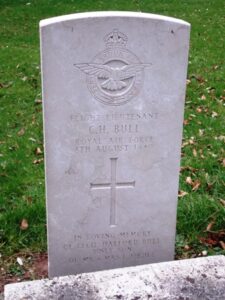
Gwyn Rowlands, Guardsman, 2736258, Welsh Guards. Gwyn was the son of Walter and Ethel Rowlands, and was the husband of Marion Rowlands of Kingston-on-Thames, Surrey. He served with the 3rd Battalion, Welsh Guards. On 8 January 1943 the 3rd Battalion was ordered to mobilise for service overseas, and on 5 February sailed for North Africa, landing at Algiers seven days later, joining 1st Guards Brigade. The Brigade fought in Tunisia during the coming months, and it was while fighting near the Cap Bon Peninsula that Gwyn was killed on 8 May 1943. He is buried at Enfidaville War Cemetery, Tunisia.